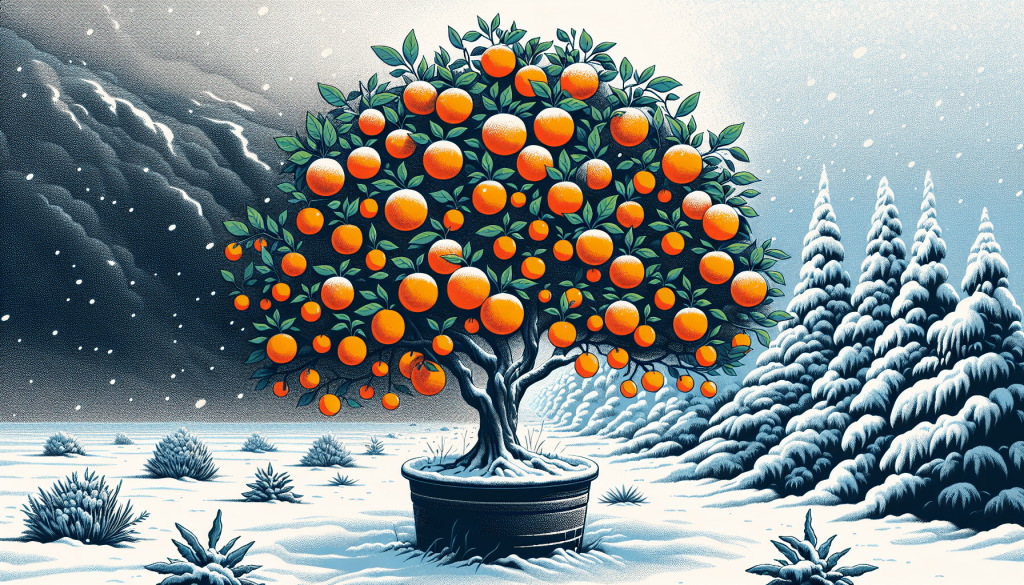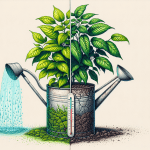This post may contain affiliate links. As an Amazon Associate, we may earn commissions from qualifying purchases.
Have you ever wondered how to grow citrus trees in cold climates? It might seem impossible—like asking for sunshine in the middle of a snowstorm. But guess what? It’s more feasible than you might think. Let’s jump right in and see how you can transform your frosty backyard into a citrus paradise.
Understanding the Challenges: Citrus Trees and Cold Climates
Growing citrus trees in cold climates presents its own set of challenges. Citrus trees are native to tropical and subtropical regions, so they naturally crave warmth and plenty of sun. Yet, with the right techniques and a touch of patience, you can trick these sun-loving plants into thriving, even when Jack Frost comes knocking.
The Impact of Cold on Citrus Trees
Cold weather can be brutal. For citrus trees, freezing temperatures can mean leaf drop, frost damage, and even death. The roots are particularly vulnerable because they are closer to the surface where frost can penetrate.
Key Points to Remember:
- Minimum Temperature: Most citrus varieties are harmed when temperatures drop below 28°F (-2°C).
- Frost Damage: Prolonged exposure to freezing conditions can damage fruit and leaves, eventually killing the tree.
Choosing Cold-Hardy Citrus Varieties
Before you brave the elements armed with a spade and some citrus seedlings, you must select the right kind of tree. Some varieties withstand cold better than others.
| Citrus Variety | Temperature Tolerance | Special Traits |
|---|---|---|
| Meyer Lemon | Down to 20°F (-6°C) | Compact size, less acidic fruit |
| Satsuma Orange | Down to 22°F (-5.5°C) | Early maturity, seedless |
| Kumquat | Down to 15°F (-9°C) | Entire fruit is edible, including skin |
| Yuzu Lemon | Down to 14°F (-10°C) | Highly aromatic, popular in Asian cuisines |
Microclimates: Your Secret Weapon
Microclimates are your best friend. These are small areas where the climate differs from the surrounding region. Think of places near stone walls, water bodies, or south-facing slopes, which can offer extra warmth and protection against the wind.
How to Identify Microclimates:
- Southerly Exposures: Areas that get the most sun.
- Near Structures: Walls and buildings can trap and radiate heat.
- Natural Windbreaks: Using hedges or other barriers to shield your trees from harsh winds.
Soil Preparation: Laying a Strong Foundation
Now that you’ve chosen the right citrus variety and pinpointed your microclimate, it’s time to focus on the soil.
The Right Soil Mix
Citrus trees prefer well-draining soil—it’s like candy to them. Heavy clay soils can be a death sentence, leading to root rot. Sandy loam or a mix of sand and organic compost is ideal.
PH Levels and Amendments
Your citrus trees are picky eaters with a preference for slightly acidic soil (pH 6-7). You might need to tweak your soil’s pH levels, especially if you’re dealing with alkaline soil.
Amendments That Help:
- Organic Compost: Adds nutrients and improves soil structure.
- Sulfur: Lowers pH levels if your soil is too alkaline.
- Perlite/Coarse Sand: Increases drainage.

Planting Techniques: Getting Rooted for Success
Timing is everything, they say, and with citrus trees, it’s no different. The best time to plant is early spring, after the threat of frost has passed.
Digging the Perfect Hole
For optimal growth, dig a hole twice as wide as the root ball but not deeper. Backfill with your custom soil mix, ensuring that the root ball is slightly above ground level to prevent waterlogging.
Mulching: A Must-Do
Mulching helps retain moisture and keeps the root zone warm but be mindful not to pile it against the trunk. A 3-4 inch layer of organic mulch like straw or wood chips works wonders.
Frost Protection: Freezing Not Allowed
Frost protection strategies are non-negotiable. An ounce of prevention is worth a pound of cure, or in this case, a tree full of lemons.
Frost Covers and Insulation
Use frost blankets or burlap to cover your trees during cold nights.
For added protection, consider wrapping the trunk with insulating materials.
Watering Wisely
Watering your trees before a frosty night can help. Wet soil retains more heat than dry soil, offering a buffer against freezing temperatures.
Heat Sources
In extreme cases, you can even introduce external heat sources like Christmas lights or specialized tree heaters to keep your citrus cozy.
| Technique | Benefits | Tips |
|---|---|---|
| Frost Covers | Prevent frost from settling on leaves | Secure edges to prevent wind from blowing |
| Insulation | Protects trunks from severe cold | Use breathable materials |
| Watering Before Frost | Wet soil retains more heat | Ensure well-drained soil to avoid root rot |
| External Heat Sources | Directly warms the tree | Use safe, weather-proof electrical sources |

Indoor Strategies: Growing Citrus Trees Indoors
As if this journey weren’t already an adventure, sometimes you might have to bring the battle indoors. If your winters are exceptionally harsh, consider growing your citrus trees as indoor plants.
Container Gardening: The Ins and Outs
The good news is citrus trees adapt well to containers. A 15-20 gallon pot with good drainage holes should do the trick. Place it near a sunny window where it can get at least 8 hours of sunlight daily.
Light and Temperature Control:
- Grow Lights: Use supplemental grow lights if natural sunlight is insufficient.
- Temperature: Maintain indoor temperatures between 55-85°F (13-29°C).
Indoor Care Routine
Your indoor citrus trees will require consistent watering, but avoid waterlogging. Regularly misting the leaves can help increase humidity, which these plants love.
Pruning and Maintenance: A Little Grooming Goes a Long Way
Pruning isn’t just about keeping your trees looking dapper. It helps promote healthy growth and fruit production.
When and How to Prune
Late winter or early spring is the ideal time for pruning, just before new growth emerges. Remove any dead or diseased branches first, and then focus on thinning out overcrowded branches to allow better air circulation.
Fertilizing Needs
Feeding your citrus trees is crucial, especially when they’re grown out of their comfort zone. Opt for a balanced, slow-release citrus fertilizer. Aim to fertilize three times a year: early spring, mid-summer, and early fall.
Pests and Diseases: The Lesser Evils
Even the best-kept citrus trees can fall victim to pests and diseases. It’s crucial to stay vigilant and address issues promptly.
Common Pests
Aphids, spider mites, and citrus leaf miners are frequent invaders. Neem oil or insecticidal soap sprays can help keep these nuisances at bay.
| Pest | Symptoms | Treatment |
|---|---|---|
| Aphids | Curling leaves, sticky residue | Neem oil, insecticidal soap |
| Spider Mites | Webbing on leaves, yellowing foliage | Miticides, keeping humidity high |
| Citrus Leaf Miner | Tracks on leaves, leaf curling | Remove affected leaves, insecticidal sprays |
Common Diseases
Root rot and citrus canker are common foes. Root rot can be avoided by ensuring well-draining soil and proper watering practices, while citrus canker requires copper-based fungicidal sprays.
The Final Touch: Harvesting and Enjoying Your Citrus Fruits
After all this effort, the sweetest reward is biting into a juicy, homegrown citrus fruit. Knowing the right time to harvest is crucial for the best flavor.
Signs of Ripeness
Unlike other fruits, citrus doesn’t ripen after being picked. Grab a fruit and give it a taste test—if it’s sweet and juicy, it’s ready to pick.
Harvesting Techniques
Use sharp pruners or scissors to cut the fruit from the tree, leaving a small stem attached. Avoid pulling or twisting the fruit, which can damage the tree and reduce next year’s yield.
Conclusion: Transforming Frost into Flavor
Growing citrus trees in cold climates may seem daunting, but it’s definitely achievable with the right approach. By choosing cold-hardy varieties, leveraging microclimates, preparing your soil, and offering frost protection, you can bring a slice of sunny paradise to your chilly backyard. Don’t forget those handy indoor strategies, and remember, a little extra care goes a long way in enjoying those shiny, delicious fruits.
You might find yourself becoming the talk of the neighborhood, the one who managed to beat the cold and harvest lemons in the heart of winter. Now, isn’t that a sweet prospect?








